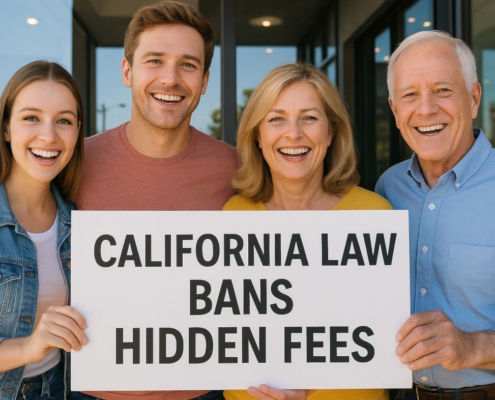Introduction
The Department of Justice in California recently confirmed that the state’s new law, which requires businesses to list “junk fees” as a component of the advertised price, applies to restaurants in the state. This presents another difficulty for the hospitality sector, which is already having trouble keeping up with rising wages and inflated expenses.
Senate Bill 478, which went into effect on July 1, 2024, would forbid California restaurants from imposing service charges or other surcharges—as many have done to combat growing expenses—unless the service fee’s amount is expressly included in the advertised prices. The topic is now unavoidable. Many people are searching for clarity on the Restaurant Service Charge in California.
SB 478 and its impact
Businesses in California are not allowed to advertise, display, or provide “a price for an item or service that fails to include all obligatory fees or additional charges” apart from taxes and shipping, according to SB 478, which was signed into legislation by Governor Newsom in October. The goal of SB 478 is to reduce “drip pricing,” which is the practice of advertising cheaper prices for a commodity or service merely to add required surcharges to the final bill.
The law covers tickets for events, short-term rentals, lodging, dining establishments, food delivery, and, in general, most sales or rentals of goods and services for a consumer’s own use, pursuant to the attorney general’s recently released FAQs. This clarity also affects how businesses approach any Restaurant Service Charge in California.
According to the state Department of Justice, the bill is not meant to be a “price control legislation,” but rather a “transparency statute.” Essentially, the law mandates that any price that is offered to a customer must be the total amount that the customer will have to pay. The FAQs also make it clear that companies cannot evade the law’s requirements by simply stating that extra costs would be charged at the time of final payment. This interpretation plays a big role in how restaurants now display a Restaurant Service Charge in California.
The stated price must reflect the entire amount that a customer pays for that commodity or service, but businesses are still able to set their own prices and offer a breakdown of the different fees contained in their advertised pricing, according to the attorney general’s guidelines. Furthermore, the FAQs explicitly state that the advertised price must include any required fee that restaurants may collect.
Therefore, the published price has to incorporate any non-voluntary gratuity payments, like those required for large gatherings. Merely stating that an extra percentage will be charged to the final price will no longer be sufficient. This makes it essential for restaurants to rethink how they present any Restaurant Service Charge in California.
Employers in California’s restaurant business, many of which have embraced a practice of applying a percentage-based fee, are feeling anxious and frustrated about this new limitation. Eateries have to either do away with that practice or figure out how to account for the expenses they would have normally incurred from required service or gratuity fees in their quoted prices. This shift has intensified conversations about the future of the Restaurant Service Charge in California.
To add to the worries, the bill may potentially unleash a new wave of litigation. Fines and damages are available pursuant to the California Consumers Legal Remedies Act (CLRA). Complaints alleging breaches of SB 478 may be filed on a personal or class basis under the CLRA. If successful, claimants may be awarded restitution, punitive penalties, and legal fees in addition to the greater actual damages and $1,000 for each violation.
This would probably encourage the plaintiffs’ bar to file more class action lawsuits, which could resemble the numerous accessibility cases brought under the Americans with Disabilities Act. Professionals in the field are understandably worried about the impact on already escalating expenses and economic dissatisfaction. Restaurants especially fear lawsuits tied to the improper application of a Restaurant Service Charge in California.
The DOJ cautions that companies may still be held accountable in private lawsuits, even while it has made it clear that early enforcement actions will probably not concentrate on current payments that are given directly and totally by a business to its employees, such as an obligatory gratuity. California eateries should start examining their marketing, costing, & advertising strategies. This is to avoid any confusion regarding the Restaurant Service Charge in California.
FAQs
1. Does SB 478 limit the amount I can charge?
No. It’s not price regulation, but transparency. The listed price has to incorporate all required fees (taxes and acceptable shipping may be distinct), but you are free to charge (and categorize) as you see fit.
2. Do B2B sales fall under SB 478?
No. Consumer (private-use) transactions are subject to the legislation, whereas purchases made for commercial purposes are not.
3. Is it possible to display the entire cost while still itemizing line items?
Indeed. Don’t promote teaser pricing below that amount, but you can display a total before you describe what’s included.
4. What is going to change for restaurants under SB 478?
Mandatory service fees may be used by restaurants & bars, but they have to be prominently displayed with a clarification of their purpose.































